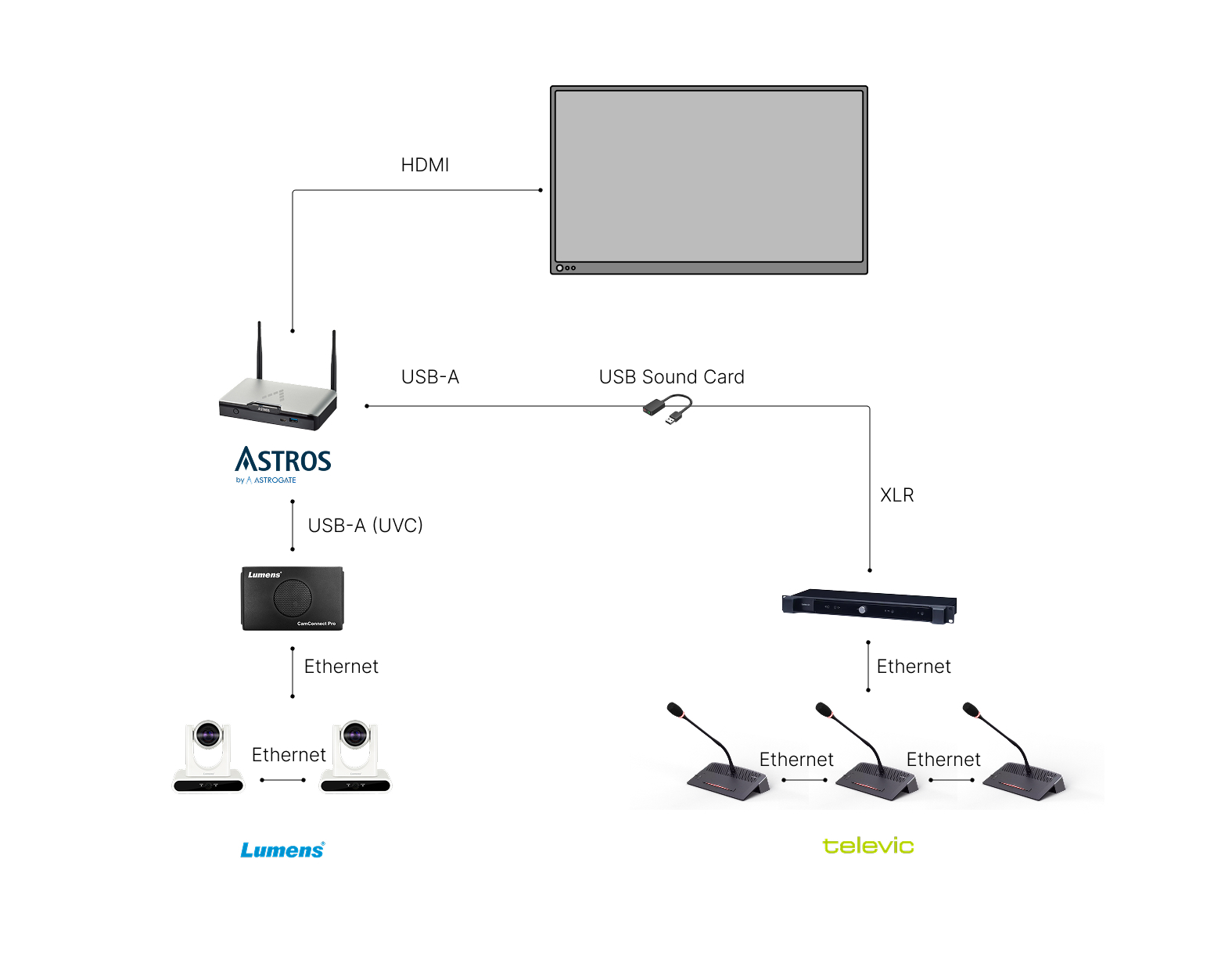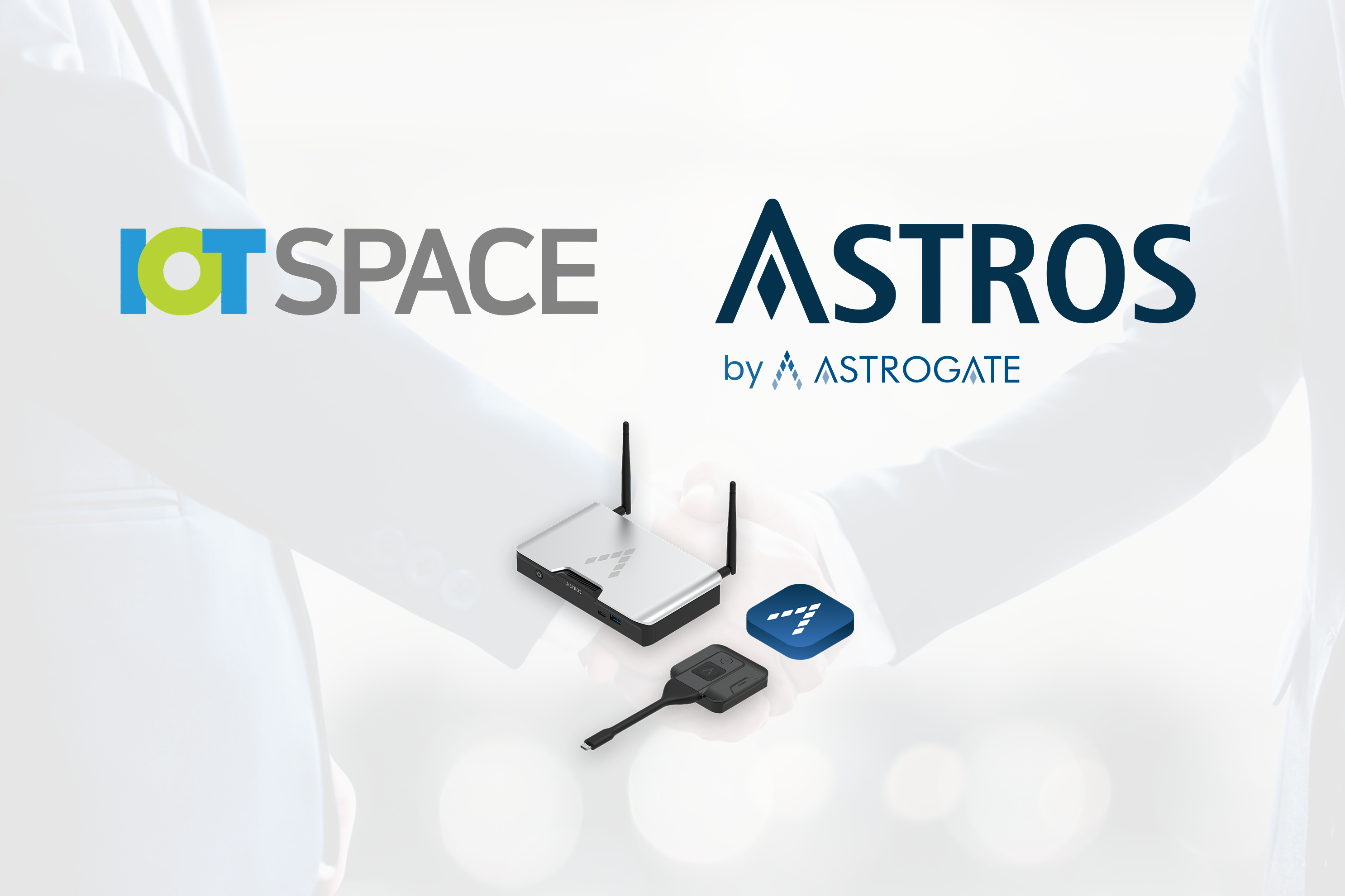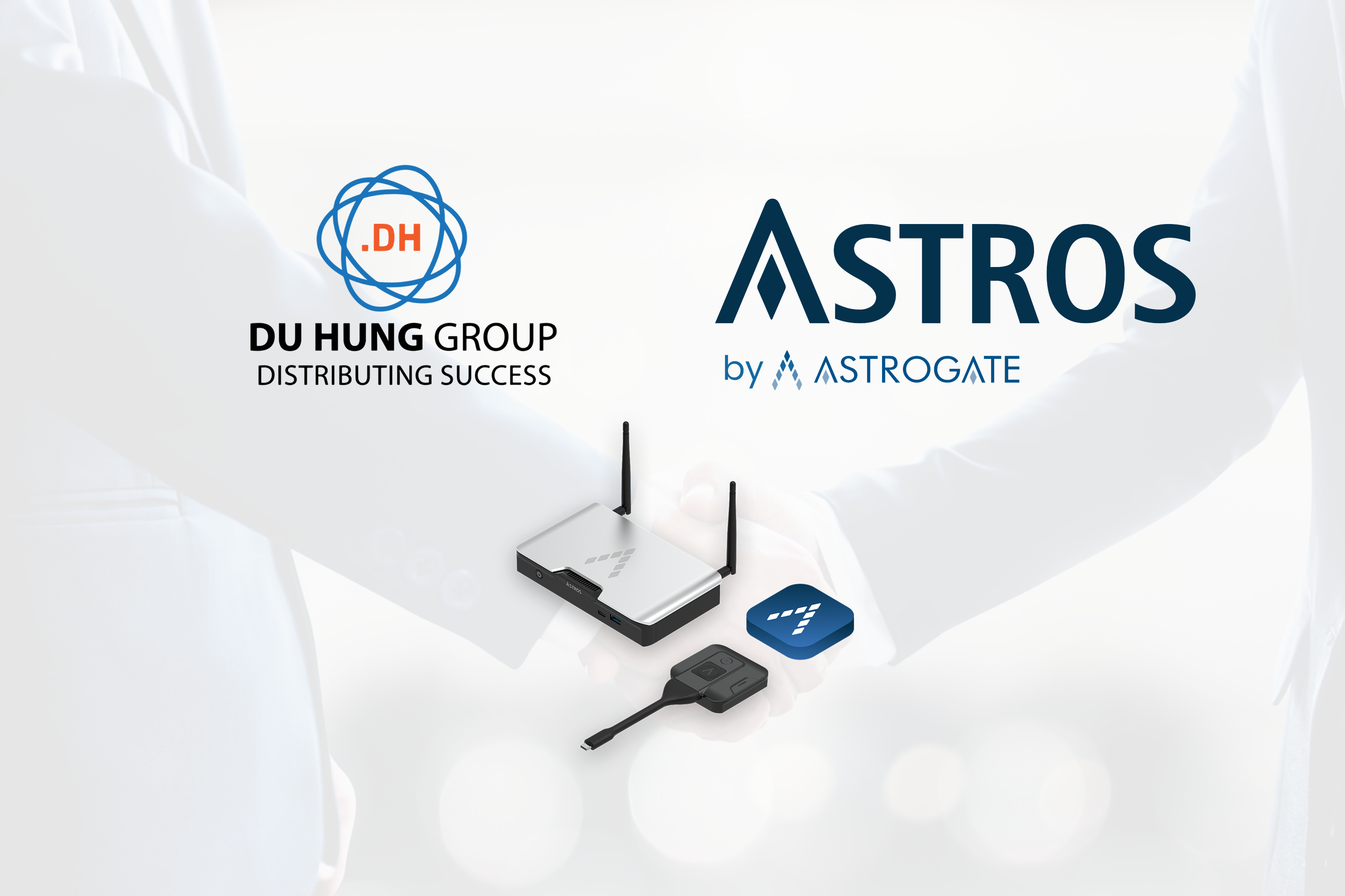Astrogate x Televic x Lumens: Collaboration & Integration for Smarter Meetings
Integrated Audio and Visual, Smarter Meetings Happen
1 min read
 Astrogate
7/3/24 12:00 AM
Astrogate
7/3/24 12:00 AM

At Astrogate, we are passionate about helping schools and universities design education spaces for the future. In today’s fast-paced digital era, integrating technology into classrooms is essential to enhance engagement, support personalized learning, and prepare students for a dynamic workforce. By combining innovative layouts, collaborative spaces, and advanced technology, educators can create environments that foster creativity, teamwork, and effective learning.
The ASTROS wireless presentation solution is transforming traditional classrooms into dynamic, interactive learning environments. With ASTROS, teachers and students can effortlessly share content, annotate ideas, and visualize complex concepts in real-time, enhancing understanding and engagement.
Traditional classrooms rely on HDMI connections, limiting device flexibility. Modern classrooms need to support diverse devices, simultaneous screen sharing, and visibility for large groups. ASTROS solves these challenges:
BYOD-Friendly: Students and teachers can share screens from Windows, Mac, Android, iOS devices, or even through a browser.
Simultaneous Screen Sharing: Up to four users can share content at the same time, promoting active participation.
Remote View: Students can view shared content on their own devices, ensuring everyone can follow along regardless of seating.
Moderation: Teachers can manage screen sharing, preview connected devices, and control who presents to keep lessons focused.
Example: A teacher demonstrates an app on a smartphone while showing slides on a laptop. ASTROS allows both screens to be shared simultaneously, improving clarity and interactivity.
Effective learning thrives on collaboration. Flexible furniture, modular seating, and adaptable layouts encourage group discussions, workshops, and team projects.
ASTROS complements these flexible designs:
One-to-Many Sharing: Share content to multiple displays simultaneously, ideal for large classrooms or breakout groups.
Interactive Displays: Teachers and students can annotate directly on content, enhancing engagement and understanding.
By combining collaborative layouts with ASTROS’ features, educators can create active learning environments that support teamwork, creativity, and critical thinking.
Future-ready classrooms prioritize well-being and inclusivity. Designs should accommodate all students with features like adjustable desks, ramps, elevators, and assistive technology. ASTROS supports participation from any location in the room, allowing students with physical challenges or social anxiety to contribute comfortably.
Creating inclusive spaces ensures that every student feels empowered, supported, and able to reach their full potential.
Designing education spaces for the future requires a visionary approach that integrates technology, collaboration, and inclusivity. ASTROS wireless presentation enables seamless content sharing, interactive learning, and flexible teaching strategies, helping educators create environments that inspire students and transform learning outcomes.

Integrated Audio and Visual, Smarter Meetings Happen

Astrogate is proud to announce an important milestone in our global expansion — the appointment of IOTSPACE as our new Regional Partner in Korea.

[Taipei, Taiwan – September 2025] – Astrogate Technology, a leading provider of wireless presentation and conferencing solutions, is proud to...